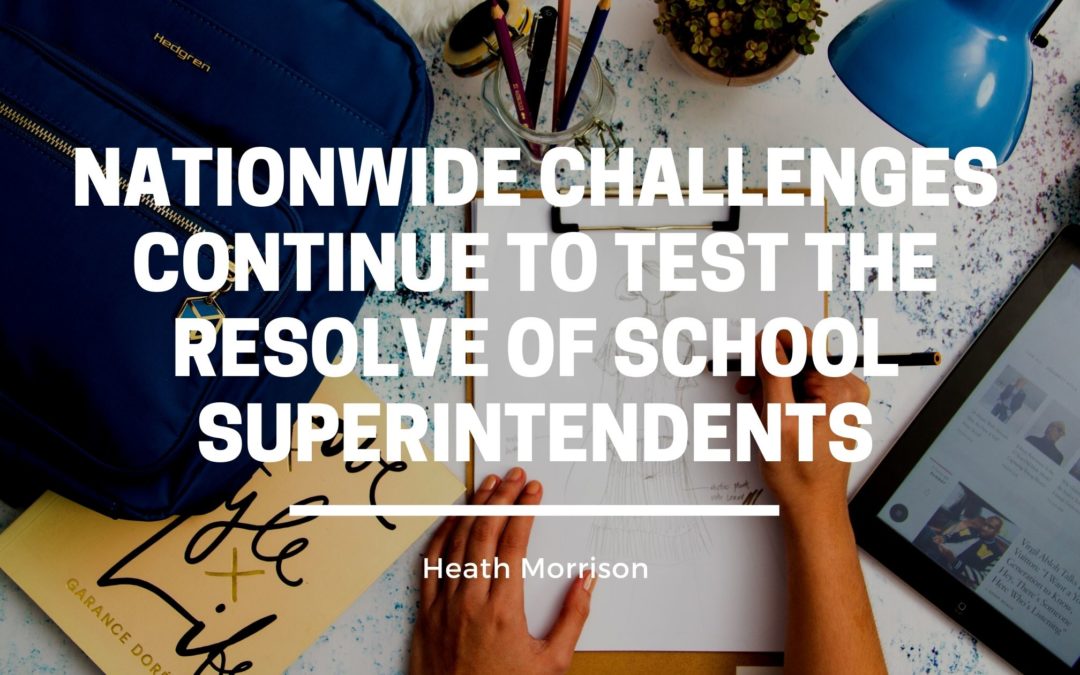I recently attended The School Superintendent Association’s (AASA) national conference and had the opportunity to interact and engage superintendents from across the country. Some have served for several years in their current roles, while others were newer to the position. What struck me in all of my discussions was the commonality in the challenges and pressures that superintendents in all regions of the nation are currently facing and the ones that loom large in the near future. Some of the general perspectives from my colleagues included:
- Political pressures have never been more prevalent in public education than they are today. The intersection of politics and public schools has always been a source of interest; today it is a driving force of concern from superintendents. The growing political divide and acrimony in our politics has created additional pressures for K-12 leaders. Certainly, COVID-19 has been at the forefront of these pressures as schools, having to weigh the safety of students and staff while also maximizing learning opportunities, have been caught in a political “tug of war” about this pandemic. Districts have had to make hugely consequential decisions on reopening schools, masking, remote learning, vaccinations and dealing with the “COVID slide”. All of these issues have proven divisive and polarizing, based on regional and local politics. While dealing with these pressures, districts have also had to address the “what and how” of teaching our nation’s complicated history as it relates to race. Groups pushing for greater equity and cultural relevance have run right into groups accusing schools of teaching Critical Race Theory, making usual mundane school board meetings combative and explosive. While these issues dominate, superintendents share that almost any aspect of school can quickly become political fodder and divert an enormous amount of energy and focus away from addressing the needs of students.
- The “Great Exodus” is impacting public education. Superintendents shared that the national teacher shortage is expected to get worse, with several credible polls showing 50% of current teachers are considering leaving the profession in the next several years. Unfortunately, the usual sources of providing talent, colleges and universities, are by and large woefully unprepared to meet the rising needs. Additionally, schools are currently experiencing huge shortages of bus drivers, paraeducators and substitute teachers. The vacancies and shortfalls in these areas have caused schools to shut down or looking for solutions – like having the National Guard step in. Many districts are using short term federal COVID relief dollars to raise salaries in these areas, but there is a looming cliff for how to manage those increased pay scales once those relief funds are fully expended. The employee crisis is causing principals and superintendents to also leave in record numbers as it is estimated that over 30% of school districts will have an opening for their CEO in the next two years.
- Concerns that important decisions about the profession of education are moving away from local authorities. While COVID negativity impacted operations of every school district in the country, it also spurred unprecedented innovation and reform. Just as school leaders were trying to examine what changes had to be made during the pandemic that might actually improve how public education is delivered, state legislatures and leaders are limiting options around remote learning and the digital conversation. More states are mandating what can and cannot be taught in our nation’s classrooms and many have begun calling for book bans. All levels of government continue to put restrictions on funding, limiting options for superintendents to mix and match precious resources in the most efficient and effective ways. This push for limiting local control away from school boards and superintendents is one that many district leaders say required attention and monitoring.
While these challenges paint a dim picture of the current state of public education, I found the vast majority of my colleagues resolved and ready to meet these issues. As I have often said, as leaders, we don’t get to choose the challenges we face, we only get to choose how to face them. Across the nation, superintendents are bringing innovative and working diligently to address these difficulties and meet the needs of our students and staff.

